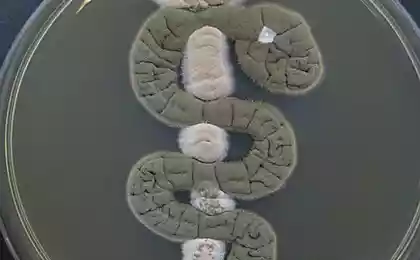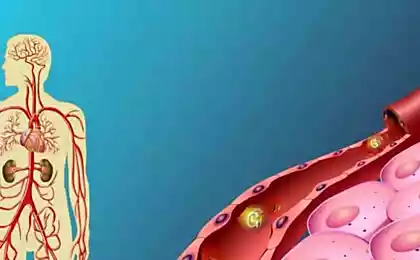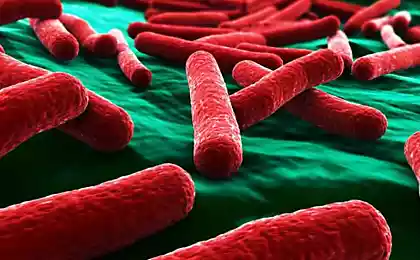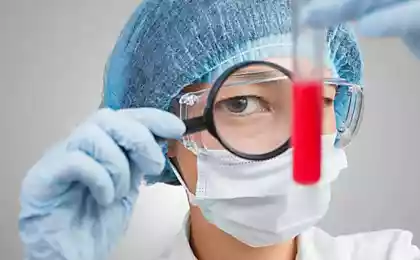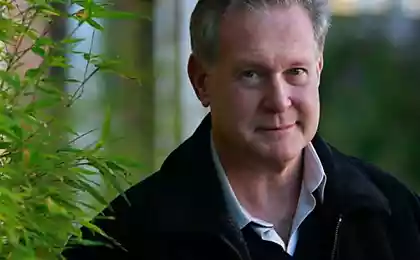151
Причина диабета – бактерии?
Science has long known that bacteria and viruses cause various diseases. But what exactly, scientists continue to discover - as, for example, the human papilloma virus that provokes cervical cancer, or the bacterium Helicobacter pylori associated with gastric ulcer.

A new study from the University of Iowa suggests that bacteria may be the cause of one of the most common diseases of our time, type 2 diabetes. A team of microbiologists at the University of Carver Medical College, led by Professor Patrick Schliver, found that prolonged exposure to the toxin produced by Staphylococcus aureus leads rabbits to develop symptoms of type 2 diabetes, including insulin resistance, impaired glucose tolerance and systemic inflammation.
“We essentially reproduced the symptoms of type 2 diabetes in rabbits simply by regularly targeting the staphylococcus superantigen,” says Schliver. A superantigen is an agent that excites a strong but not very effective immune response. This is beneficial for microbes, as they confuse the cards for immunity: instead of destroying them with a precise blow, the immune system in response to superantigens develops a violent general reaction that makes it difficult to fight a specific pathogen of the disease.
The results of the work of scientists from Iowa suggest that therapy aimed at eliminating the staphylococcus bacterium or neutralizing its superantigens may be useful for the prevention or treatment of type 2 diabetes. Obesity is a known risk factor for type 2 diabetes, but it also changes the human microbiome, the ecosystem of bacteria that inhabit our body and protect our health.
“We found that as people gain weight, they dramatically increase the number of staphylococcus bacteria on the surface of the skin,” says Schliver, “which means they are chronically exposed to the superantigens they produce.”
Schliver’s study provides preliminary evidence that superantigens — toxins produced by all strains of staphylococcus bacteria — destroy the immune system and are responsible for the death of various staphylococcal infections, such as toxic shock syndrome, sepsis and endocarditis.
The team’s latest study, published recently in the journal mBio, shows that superantigens interact with fat cells and the immune system, causing chronic systemic inflammation that leads to insulin resistance and other symptoms of type 2 diabetes. Evaluating the population of staphylococcus skin of four patients with diabetes, the team led by Schliver concluded that the exposure of bacterial superantigens on them is proportional to the dose of superantigen that caused laboratory rabbits to develop symptoms of diabetes during the experiment.
“I think we have a way to try to change the course of this disease,” Schleaver said, adding, “We’re working on a vaccine against superantigens and we think it can prevent type 2 diabetes.”
The team is also studying the use of a topical gel containing glycerol monolaurate, which kills staphylococcus bacteria, as a means of destroying it on the skin. It will soon be seen whether regular use of it can lower blood sugar levels in patients with prediabetes. published
P.S. And remember, just changing our consumption – together we change the world!
Source: lchf.ru/6516

A new study from the University of Iowa suggests that bacteria may be the cause of one of the most common diseases of our time, type 2 diabetes. A team of microbiologists at the University of Carver Medical College, led by Professor Patrick Schliver, found that prolonged exposure to the toxin produced by Staphylococcus aureus leads rabbits to develop symptoms of type 2 diabetes, including insulin resistance, impaired glucose tolerance and systemic inflammation.
“We essentially reproduced the symptoms of type 2 diabetes in rabbits simply by regularly targeting the staphylococcus superantigen,” says Schliver. A superantigen is an agent that excites a strong but not very effective immune response. This is beneficial for microbes, as they confuse the cards for immunity: instead of destroying them with a precise blow, the immune system in response to superantigens develops a violent general reaction that makes it difficult to fight a specific pathogen of the disease.
The results of the work of scientists from Iowa suggest that therapy aimed at eliminating the staphylococcus bacterium or neutralizing its superantigens may be useful for the prevention or treatment of type 2 diabetes. Obesity is a known risk factor for type 2 diabetes, but it also changes the human microbiome, the ecosystem of bacteria that inhabit our body and protect our health.
“We found that as people gain weight, they dramatically increase the number of staphylococcus bacteria on the surface of the skin,” says Schliver, “which means they are chronically exposed to the superantigens they produce.”
Schliver’s study provides preliminary evidence that superantigens — toxins produced by all strains of staphylococcus bacteria — destroy the immune system and are responsible for the death of various staphylococcal infections, such as toxic shock syndrome, sepsis and endocarditis.
The team’s latest study, published recently in the journal mBio, shows that superantigens interact with fat cells and the immune system, causing chronic systemic inflammation that leads to insulin resistance and other symptoms of type 2 diabetes. Evaluating the population of staphylococcus skin of four patients with diabetes, the team led by Schliver concluded that the exposure of bacterial superantigens on them is proportional to the dose of superantigen that caused laboratory rabbits to develop symptoms of diabetes during the experiment.
“I think we have a way to try to change the course of this disease,” Schleaver said, adding, “We’re working on a vaccine against superantigens and we think it can prevent type 2 diabetes.”
The team is also studying the use of a topical gel containing glycerol monolaurate, which kills staphylococcus bacteria, as a means of destroying it on the skin. It will soon be seen whether regular use of it can lower blood sugar levels in patients with prediabetes. published
P.S. And remember, just changing our consumption – together we change the world!
Source: lchf.ru/6516
